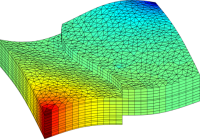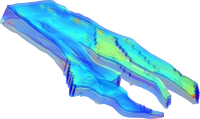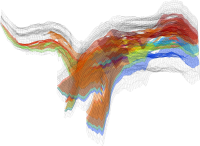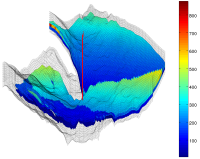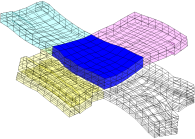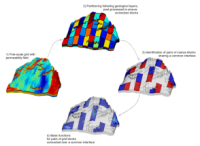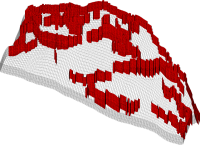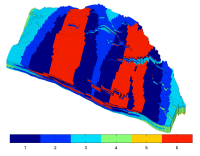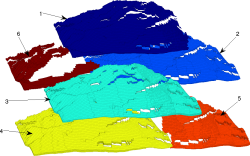|
Script-based Visualization
MRST supports three basic, but quite flexible, routines for visualisation of grids and face and cell data, as well as a few helper routines that e.g., outline coarse grids and plot well paths. More advanced visualisations can be made by combining the basic routines and standard MATLAB functionality, e.g., as shown below. For special grid types, MRST also supports tracing of streamlines using Pollock's method.
Plotting Cell DataMRST provides the basic routine plotCellData for visualisation of cell data. The routine assumes that one scalar value is associated with each cell in a grid structure and visualises the scalar data by plotting all exterior grid faces, colored by the given data values. The graphical output can be restricted to a subset of the grid by specifying a vector of cell numbers to be visualised. The visualisation is implemented in terms of the low-level MATLAB function PATCH, which means that all properties supported by PATCH can be passed as argument to plotCellData. The figures below show a few examples of simple visualisations obtained using plotCellData. MRST also provides the routine plotGrid, which is a special case of plotCellData. Plotting Face DataMRST provides the basic routine plotFaceData for visualisation of face data. The routine assumes that one scalar value is associated with each face in a grid structure and visualises the scalar data by plotting all exterior grid faces, colored by the given data values. The graphical output can be restricted to a subset of the grid by specifying a vector of cell numbers to be visualised. The visualisation is implemented in terms of the low-level MATLAB function PATCH, which means that all properties supported by PATCH can be passed as argument to plotFaceData. ExamplesThe figures below show several examples of how one can combine different features of the two basic routines plotCellData and plotFaceData to create different plots. We also illustrate some of the special-purpose routines that are supplied with MRST.
|
|||||||||||||||||||||||||

